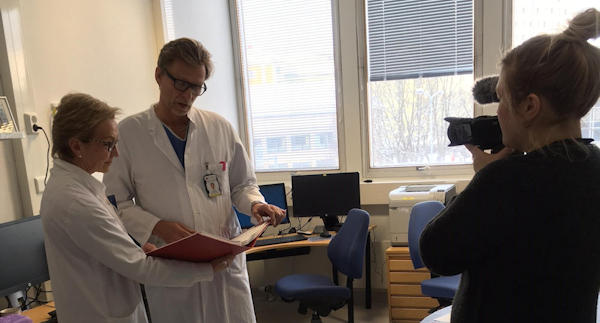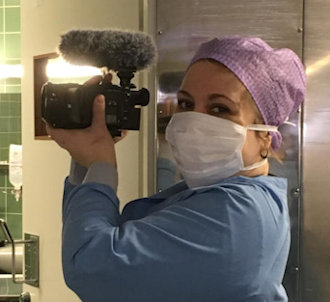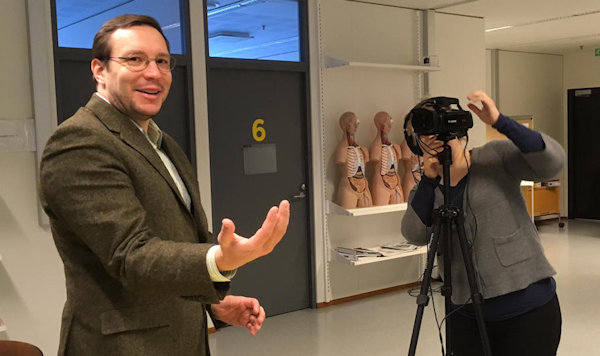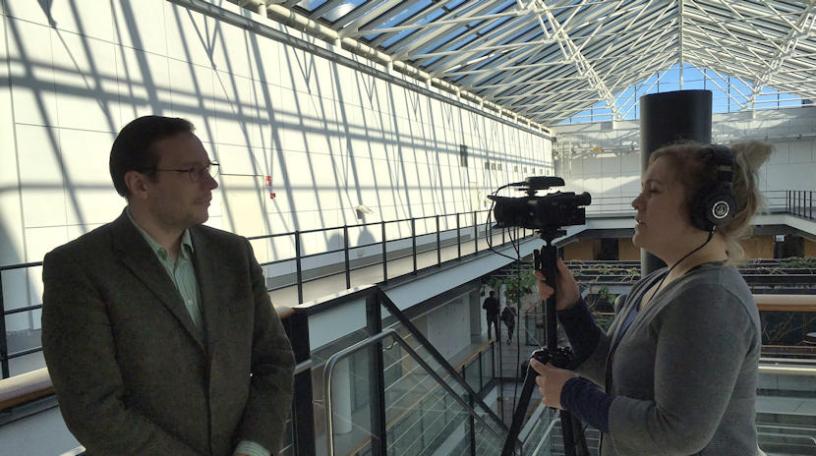Lately, I’ve have worked on scripting a video, learned how to hold a microphone properly (not as trivial as you might think), and even viewed part of a surgery. What does that have to do with a project manager’s job? We are making a short video of the HERCULES project for the YouTube playlist of EU funded Research & Innovation projects. It will also be used for presenting the project as widely as possible, of course. Here’s my view of the process and some ‘making of’ material from behind the scenes.
Brainstorming and scripting
Making a video has many similarities to managing any other project. First you have brainstorming and planning meetings. Most of these I had with our camera woman and editor, Helena Hiltunen from the University of Helsinki Digital Communication services, and Chiara Facciotto, a PhD student in the project, who has an interest in science communication and a knack for brainstorming. With Chiara and Helena we produced the backbone of the project, the action plan, which in this case was the script.
Since time and resources are limited, which applies to all projects, we had to choose what the essential message is and how to convey it in under three minutes (the maximum length of videos that can be submitted for the EU project YouTube channel). We also could not go and film all our project partners around Europe (unfortunately), so the video footage is of the partners at University of Helsinki and Turku University Hospital.

Casting
The next step was finding and recruiting people; scientists to perform in the video, an animator, and someone with a nice voice and pronunciation for the narration. Luckily, we have many researchers who are not just talented in science but can also be persuaded to appear in front of the camera. Networks were essential in finding an animator and narrator. Annika from PoRes Communication, who did most of the animations, has worked with our University of Turku partner earlier, and our ‘voice’, Alison, is a senior lab technician and a future video-blogger in another project I work for. Chiara also had an opportunity to practice her animation skills. Such multi-talented people we’ve got here.
Action
In research projects, though you always have a plan, you don’t know in advance what the result will be (otherwise there would be no need for research). Sometimes you don’t get exactly what you expect, but sometimes you get something even better. The same with our video.
When we went to Turku to film Seija at the hospital, we were lucky to get footage also of surgeons and nurses during sample collection. I had not counted on it in the scripting phase, as it is impossible to know much in advance when patients are coming to the operation. However, the shoot was scheduled on a Wednesday, which is the typical operation day, so I had my hopes. For more about sample collection, see the blog post by Seija and Johanna.

And it’s a wrap
Today we finished filming the last part of the video at the University of Helsinki with Sampsa, the director of the project. All the material is now in Helena’s hands. According to her, we have so much good footage that the difficulty is in choosing what to leave out. The last part will be narration and subtitles, and then it’s time to publish and disseminate.
I can’t wait to see the final result. If you can’t either, stay tuned into our Twitter account @HerculesOvCa or follow our website.

Update to the post: here is the final video published in YouTube.

Great post, Tiia! We’ll have to do a video as well here in our lab in Paris. And, I (and many others in the project) indeed have a similar sensation as you about confronting the complexities of making a video: beginning to understand new domains can be hard, but also really fun. And it allows us to start communicating about, and seeing together, the bigger picture that, hopefully, will enable us to better help in the fight against Ovarian Cancer.
Your video is part of it, and I can wait to see it!
LikeLike
The video can be found here: https://youtu.be/XpxhzttzlEo
LikeLike